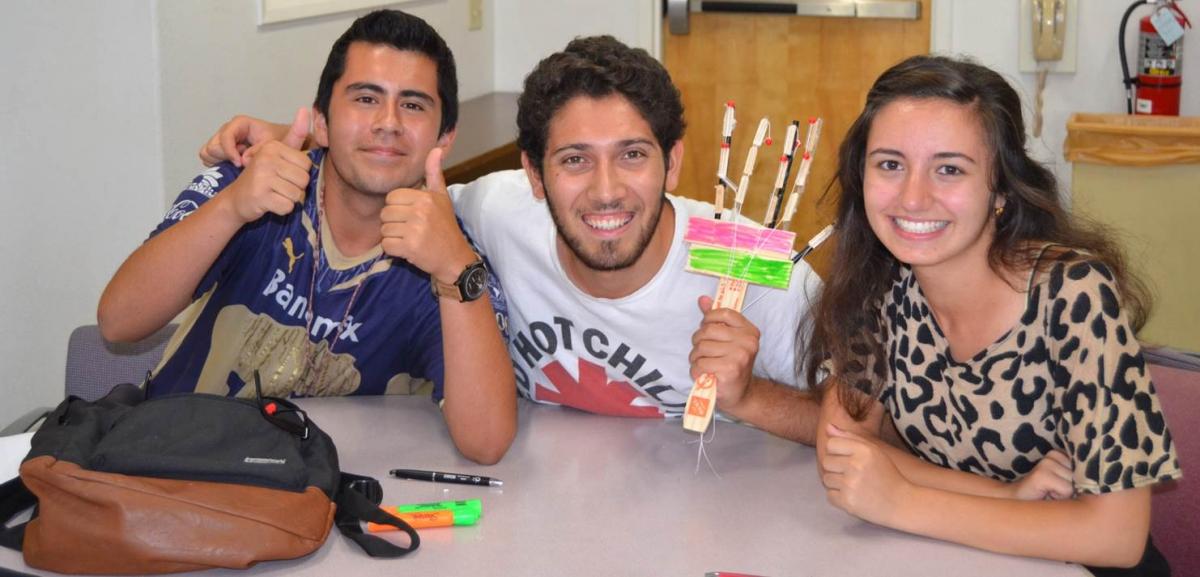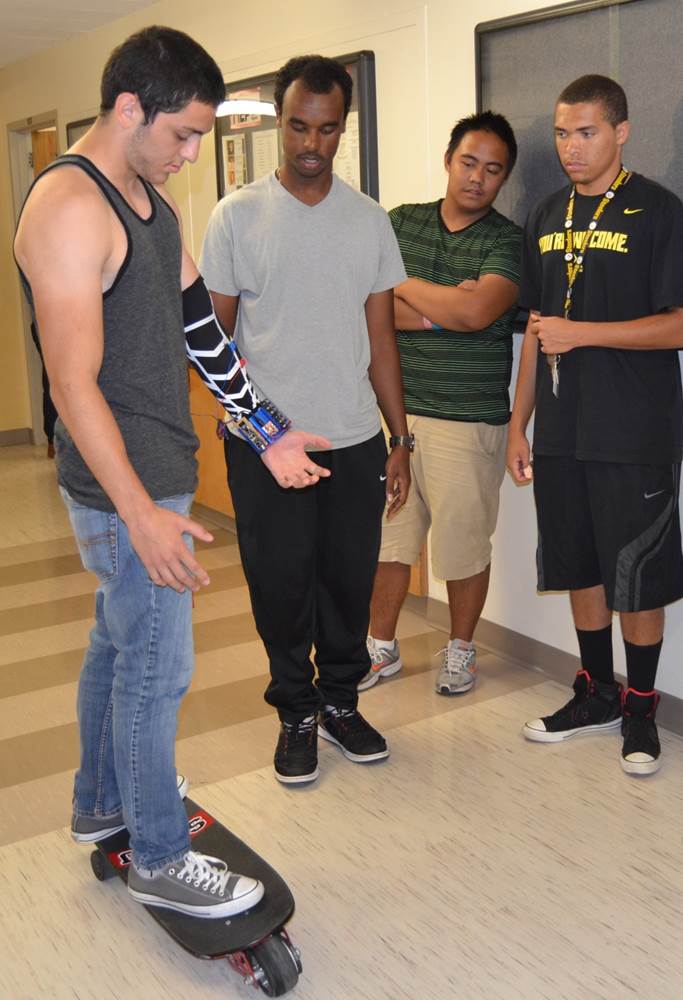 For five Fridays this summer, 20 incoming freshman at San Diego State University attended what’s known as the Research Academy, Jr., a program designed to help students get ready for college. Modeled after a similar program for undergraduate students, this academy includes presentations from researchers and students involved with the Center for Sensorimotor Neural Engineering (CSNE) at SDSU.
For five Fridays this summer, 20 incoming freshman at San Diego State University attended what’s known as the Research Academy, Jr., a program designed to help students get ready for college. Modeled after a similar program for undergraduate students, this academy includes presentations from researchers and students involved with the Center for Sensorimotor Neural Engineering (CSNE) at SDSU.
The Academy is part of a five-week program through the Louis Stokes Alliance for Minority Participation program, which assists universities and colleges in diversifying the STEM (Science, Technology, Engineering and Mathematics) workforce. The summer LSAMP program at San Diego State University includes a review of calculus and an introduction to research methods presented by CSNE faculty, staff and students. LSAMP was established through the National Science Foundation.
Theresa Garcia, interim assistant dean for Student Affairs at the College of Engineering, said speakers included current and former students who have worked with CSNE faculty, volunteered at a community outreach event or participated in the Research Experience for Undergraduates program at the University of Washington. Incoming freshman, all majoring in STEM fields, also visited a lab that is involved in CSNE research.
“We want to build a pipeline of future undergraduate researchers, who will then pursue advanced degrees in academia or careers related to the CSNE,” said Garcia, who serves as the head of CSNE diversity and outreach efforts at San Diego State.
This summer, students also had hands-on experience with EEG (electroencephalography) and EMG (electromyography), devices that measure electrical activity in the brain and muscles, respectively. ”We wanted them to see how that information and process can be applied in engineering,” Garcia said.
 Semir Ocbamicael, senior in mechanical and bioengineering (pictured at left, in gray t-shirt), demonstrated an EMG skateboard built by four other seniors. Sensors were attached to a sleeve and a small wireless chip on the skateboard, and the EMG signal from the sleeve controlled the motor’s speed. The faster the user flexed his muscle, the faster the motor went on the skateboard. Ocbamicael works in the lab of Dr. Kee Moon, professor of mechanical engineering and a deputy director at the CSNE.
Semir Ocbamicael, senior in mechanical and bioengineering (pictured at left, in gray t-shirt), demonstrated an EMG skateboard built by four other seniors. Sensors were attached to a sleeve and a small wireless chip on the skateboard, and the EMG signal from the sleeve controlled the motor’s speed. The faster the user flexed his muscle, the faster the motor went on the skateboard. Ocbamicael works in the lab of Dr. Kee Moon, professor of mechanical engineering and a deputy director at the CSNE.
On Friday, August 1, the final day of the Academy, students built a prosthetic hand using drinking straws, popsicle sticks and string, with a goal to design a hand that can pick up something. This activity has been used at larger outreach events in San Diego.
Garcia said the program, though new, has already had some success. Several students who attended last year’s Academy, Jr. (the first of its kind) have ties with the CSNE.
In addition, Ismael Reveles, one of the first undergraduate students to work on CSNE-related research at San Diego State with Karen May-Newman, served as a guest speaker this year. He’s now pursuing a PhD at Arizona State University and is specializing in haptics, which refers to the sense of touch and is used in robotics-related research.
The Research Academy, Jr. is supported by the National Science Foundation through the Center for Sensorimotor Neural Engineering and the Louis Stokes Alliance for Minority Participation program.
The San Diego MESA Alliance organizes a Research Academy for 25 undergraduates each summer. Students from two local community colleges take part in this program, which is designed to help students better understand research. Students who take part in this program will visit a lab that is conducting research related to the CSNE.
